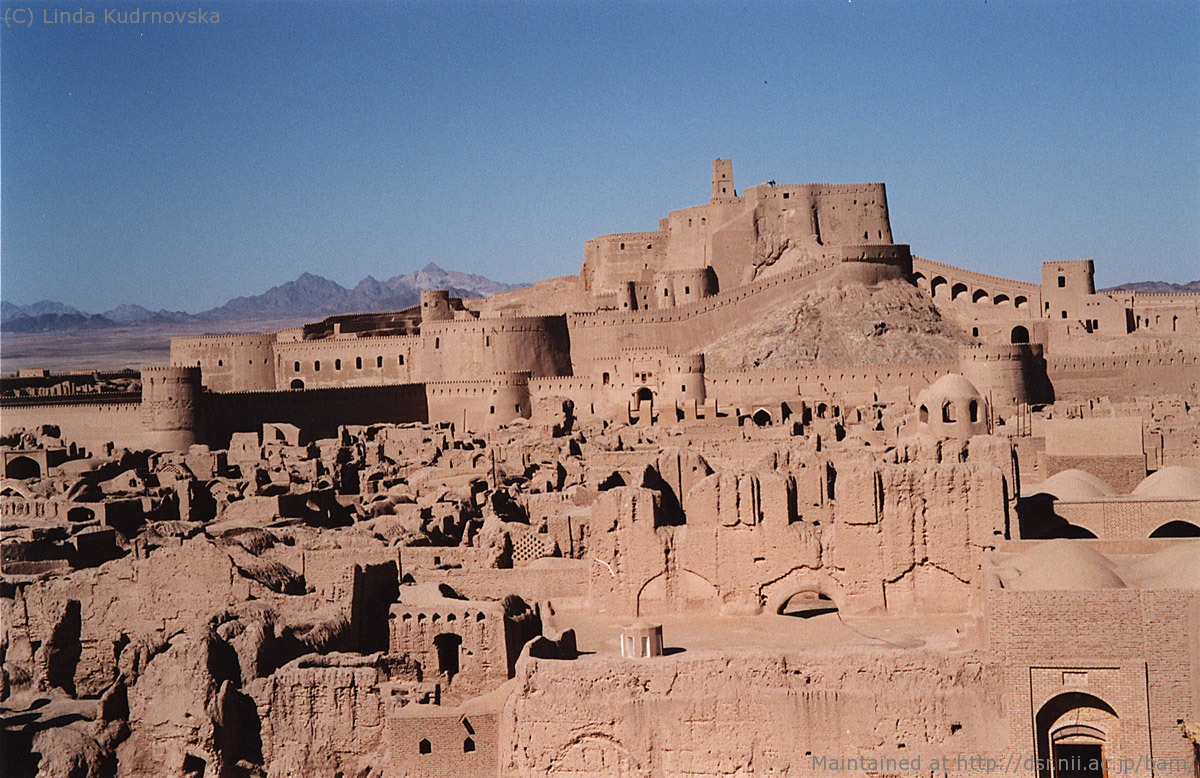Arg-e-Bam (Bam, Kerman)
Arg-e-Bam was the largest adobe structure in the world. As the name suggests, this historical wonder is located in the city of Bam in the province of Kerman (Southeast of Iran). Unfortunately almost 80% of Arg-e-Bam was destroyed in the earthquake of December 26th 2003. But thanks to international aids and national determination, the historic site has been almost fully restored.
This historic site was actually a large fortress in which a citadel was located. However due to the fact that the citadel is located at the highest point of the fortress and has become its icon, the name Bam Citadel has been given to the entire fortress. The citadel is located such to provide the best view and guarding position for the defense purposes.
The entire area of Bam Citadel is approximately 180,000 square meters and its surrounding walls are as high as 7 meters. The construction of Bam Citadel is traced back to 5BC to the Achaemenid empire. It is built on the famous silk road which was a an ancient network of trade and cultural transmission routes, connecting east and west of the globe.
In the Bam Citadel (the entire location), two sections are distinguished: a section which was used as the governing part of the city and a section for the ordinary people. The former was located in the most inner walls and includes the citadel, barracks, mill, 4 season house (Emarat-e-chahar-fasl), a 40 meter deep water-well and a stable with 200 horses capacity. The latter was located in the surrounding of the governing section and included the main gates to the city, the bazaar, public buildings such as schools and around 400 houses.
Bam Citadel was designed such that with the gates closed, it was almost impossible to enter the city and the people could live independent from the outside for months with their own water-wells, gardens and domestic animals. Entering the city with the gates closed meant climbing the high walls which was protected by the guards.
Another wonder of this historic site is the architecture of the houses; due to the warm temperature especially in the summer, the houses were equipped with a natural air conditioning design. This included a structure that could guide the wind through the yard, which usually had a water basin to cool down the wind, and into the houses. With the wind passing over the water, it acted as a natural airco and not only provided the houses with a pleasant breeze, but also filtered it from any dust and sand.
After the devastating earthquake of 2003, almost 80% of the Bam Citadel was destroyed, however due to the importance of this historic site and as a World Heritage site, many countries volunteered to help in its restoration program. Japan, Italy and France are among the countries that contributed the most. And thankfully today, tourists can again experience the wonders of this marvelous city.
Map:


 D5 Creation
D5 Creation